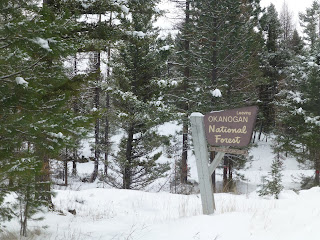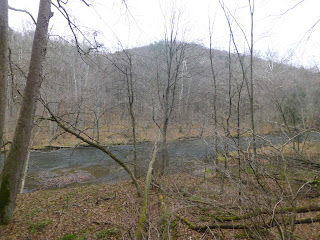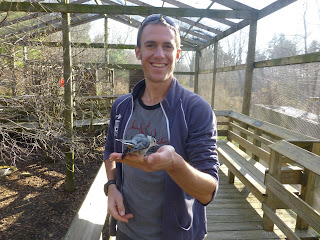 |
| Moose in study area |
After a month hiatus from
serious work of any kind, December has been the exact opposite. I returned to
my post as a Physical Therapist at North Valley Hospital and resumed my role as
a field technician for Apryle’s PhD project. This in combination with the
depressingly cold, icy, and short winter days in Tonasket has made it quite
tough to keep up the mileage.
 |
| Setting up a site |
However, I have tried my
best to keep up my training in preparation for an ambitious 2017 racing
schedule that includes the competitive Chuckanut 50K and Lake Sonoma 50 Miler.
Similar to the final weeks of 2015, Apryle and I are back in the field again this year setting out our Giving Up Density (GUD) trays. The experiment is quite similar to last year but we made a few modifications to hopefully increase success.
 |
| Apryle & I in the Field |
1. We set the
trays out a few weeks early to allow a burn in period for the deer to acclimate
to the presence of the trays. This would allow them to feel more comfortable
eating out of them.
2. We eliminated
the use of the alfalfa cubes after noting that the captive deer at Washington
State University had a difficult time eating them.
3. We were sure
to zip tie the grates to the top of the trays to ensure the deer would not
simply take it out of the tray.
 |
| Rose Cuttings |
In addition to the GUD
portion of the experiment, Apryle decided to add another couple components. The
first includes taking rose cuttings with the intention of counting the number
of thorns on the stem. In theory, a stem that is more heavily browsed would concentrate
more energy into arming itself with more defenses (thorns).
 |
| Seed Orchard in Study Area |
The second component is
collecting scat samples to analyze composition at a later date. Determining the
composition of the scat will allow us to determine the diet of the deer at
various locations (both wolf and non-wolf areas).
Training
Month
December
|
Dates
1 to 3
|
Miles
24.91
|
Time
3:56:50
|
Vertical (ft)
2,933
|
Long Run
10.5
|
December
|
4 to 10
|
67.2
|
8:10:39
|
3,103
|
10.1
|
December
|
11 to 17
|
61.21
|
9:08:41
|
8,954
|
15.11
|
December
|
18 to 24
|
50.54
|
6:37:06
|
3,753
|
10.13
|
 |
| Overlooking HW 20 Corridor |
Airport Hill Road – After running the dirt road up to the local airport a few times
this summer, I greatly increased the volume of trips this winter. The route
offers beautiful panoramic views of the mountains and the city of Tonasket
below. With a total of 500 vertical feet and 6 miles on stone road, it makes a
perfect lunch break run.
 |
| Okanogan National Forest |
Whistler Canyon – This is a trail I wished I would have run more this summer when I
was working in Oroville. In fact I enjoy this run so much that Apryle and I
decided to create a 50 mile race here for 2017. This winter the canyon is
particularly stunning with a dusting of white snow highlighting the tan cliffs.
 |
| Okanogan Skyline |
Apryle and I covered the
looped trail around Black Diamond Lake early in the month and since, I have
done several out and backs up canyon. The first 2.5 miles of the trail gains
well over 1,200ft. I have spotted several dozen Big Horn sheep that appear more
prominent in the winter. Also after discovering strings of Mountain Lion tracks
in the snow, I increased my level of vigilance.
 |
| Sled-Dogs |
Tonasket Track – Due to the decreased daylight hours, there have been several
occasions in which I have been relegated to the track. Typically, the snow has
been packed enough to keep a solid pace, which is nice to knock out miles
quicker.
 |
| Running Post GUD Setup |
Random Forest Service Downhills – Apryle and I have been setting out our GUD trays
across Okanogan and Ferry County and after finishing our work Apryle drops me
off at the last site and I run back to the start of the road. Typically, this
allows me to make a quick descent down a plowed logging road ranging from 5 to
10 miles. I throw on some yaktrax and bomb downhill as fast as possible trying
my best to absorb the beautiful scenery.






















